A compilation featuring pictures and helpful tips for identifying the most prevalent birds in the United Kingdom.
Discovering the Common British Birds
The British Isles boast an array of avian species, and below you’ll find the top ten most frequently encountered ones: wren, robin, house sparrow, wood pigeon, blackbird, chaffinch, blue tit, dunnock, meadow pipit, and great tit.
Among the top twenty most common British birds, you’ll find some lesser-known species like willow warbler, chiffchaff, blackcap, and woodcock. Although these birds may not frequently grace gardens, they populate various regions of the UK for part of the year.
Presented here is a comprehensive list of the twenty most widespread birds in the UK, accompanied by population data, photographs, and identification tips for each species. Detailed information about the data used for compiling this list can be found at the end of this page.
Ranking the Leading Twenty British Bird Species
To ensure comprehensive recognition, photographs of both male and female individuals have been included for species exhibiting notable sexual distinctions.
1. Wren
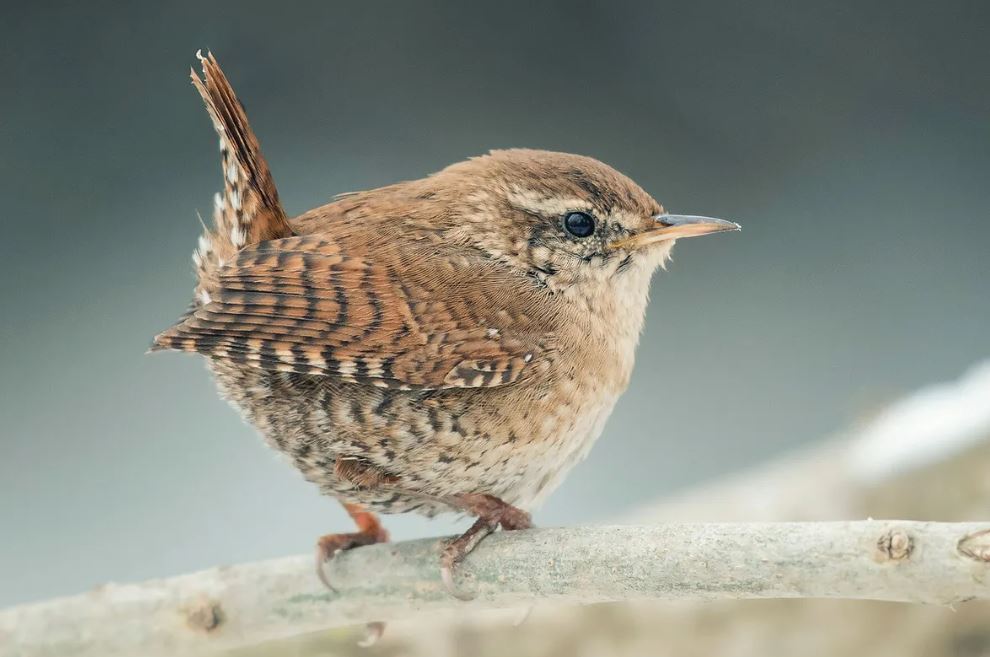
- Scientific Name: Troglodytes troglodytes
- Estimated population at peak season: 11,000,000
- Conservation Status in the UK: Green
The wren, being the tiniest British bird after the firecrest and goldcrest, is often overshadowed by larger and more vibrant species like robins, blackbirds, and wood pigeons. However, once you become acquainted with its characteristics, you’ll spot this diminutive bird in numerous British gardens and woodlands.
Listen attentively for the wren’s rapid and surprisingly loud call, often emanating from the lower regions of foliage. Keep an eye out for its unmistakable silhouette, particularly the short, usually upright tail.
2. Robin

- Scientific Name: Erithacus rubecula
- Estimated population at peak season: 7,350,000
- Conservation Status in the UK: Green
The robin, with its distinctive red chest, is easily identifiable and beloved by many. This charming visitor frequents British gardens, as well as woodlands and hedgerows throughout the country.
Unlike other common birds, robins remain active and visible all year round. Their melodic and somewhat melancholic song can even be heard during the depths of winter. Interestingly, in urban areas, robins occasionally serenade through the night!
3. House Sparrow

- Scientific Name: Passer domesticus
- Estimated population at peak season: 5,300,000
- Conservation Status in the UK: Red
Although the house sparrow ranks as the third most common British bird, its population has experienced a severe decline since the 1970s, earning it a “Red” conservation status.
Despite this decline, house sparrows still inhabit most towns and cities across the UK. You can identify sparrow colonies by their characteristic chirping, often emanating from hedges and bushes in gardens and parks.
Male house sparrows flaunt a combination of chestnut brown, dark grey, and light grey plumage, while females possess more subdued colors.
4. Woodpigeon
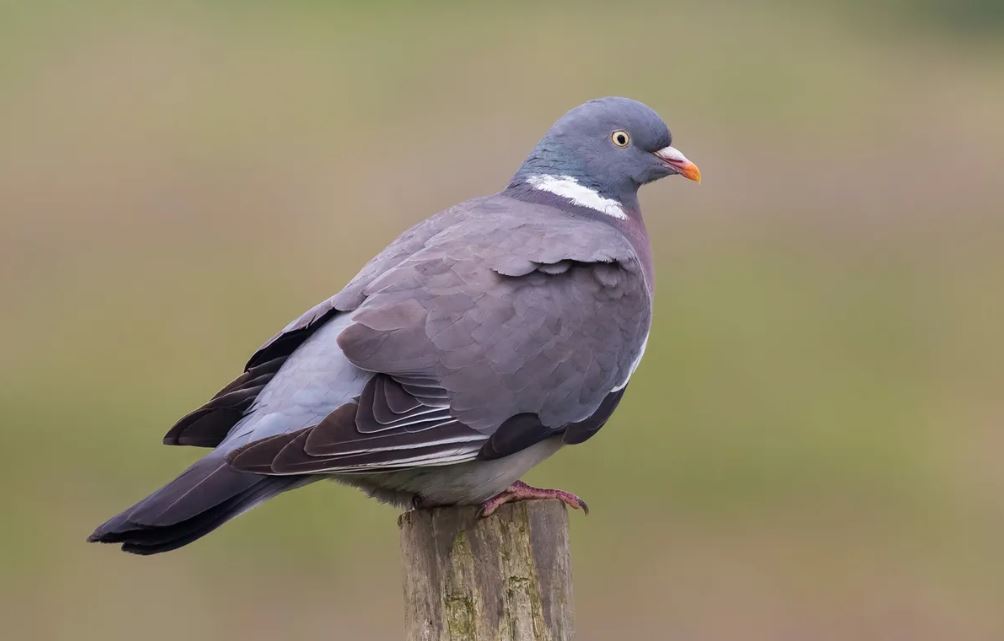
- Scientific Name: Columba palumbus
- Estimated population at peak season: 5,150,000
- Conservation Status in the UK: Green
The woodpigeon stands out from other British pigeons and doves due to its notable white neck stripe and wing stripes visible during flight. This sizable bird frequents gardens, parks, and woodlands across most regions of the UK.
Listen closely to the woodpigeon’s five-syllable call, which distinguishes it from the three-syllable call of the collared dove.
5. Blackbird
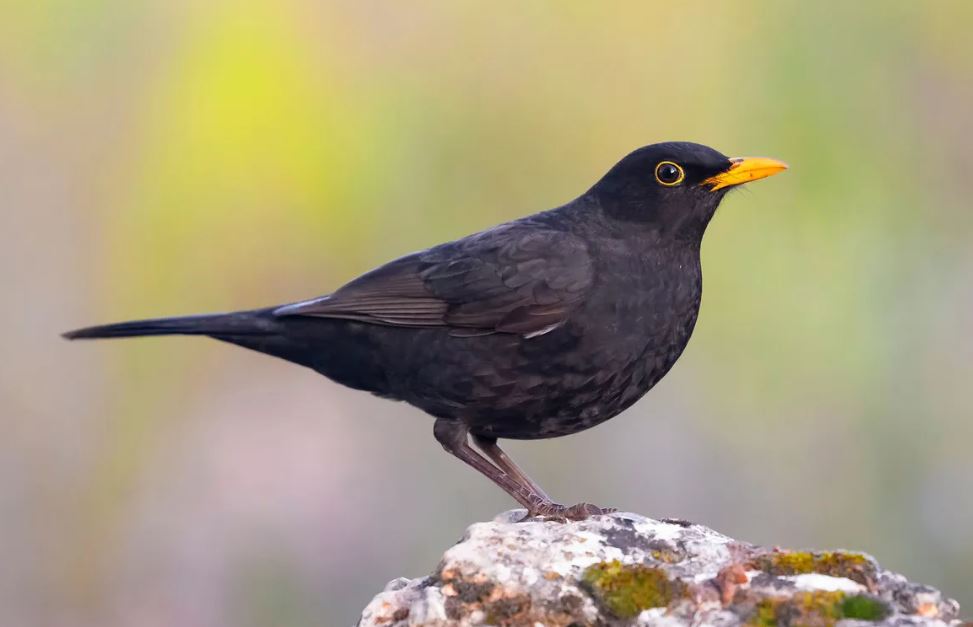
- Scientific Name: Turdus merula
- Estimated population at peak season: 5,050,000
- Conservation Status in the UK: Green
Male blackbirds showcase black feathers, orange-yellow bills, and a thin yellow ring around each eye. Females, on the other hand, display gray-brown plumage with streaked chests.
The blackbird falls in size between sparrows and tits, and it is smaller than other black-colored members of the crow family, such as carrion crows and jackdaws. The only potential confusion arises with the starling, which is also black but has numerous white spots and reddish legs, while a blackbird’s legs are dark gray/brown.
The blackbird is renowned for its melodious song and its frantic alarm call.
6. Chaffinch
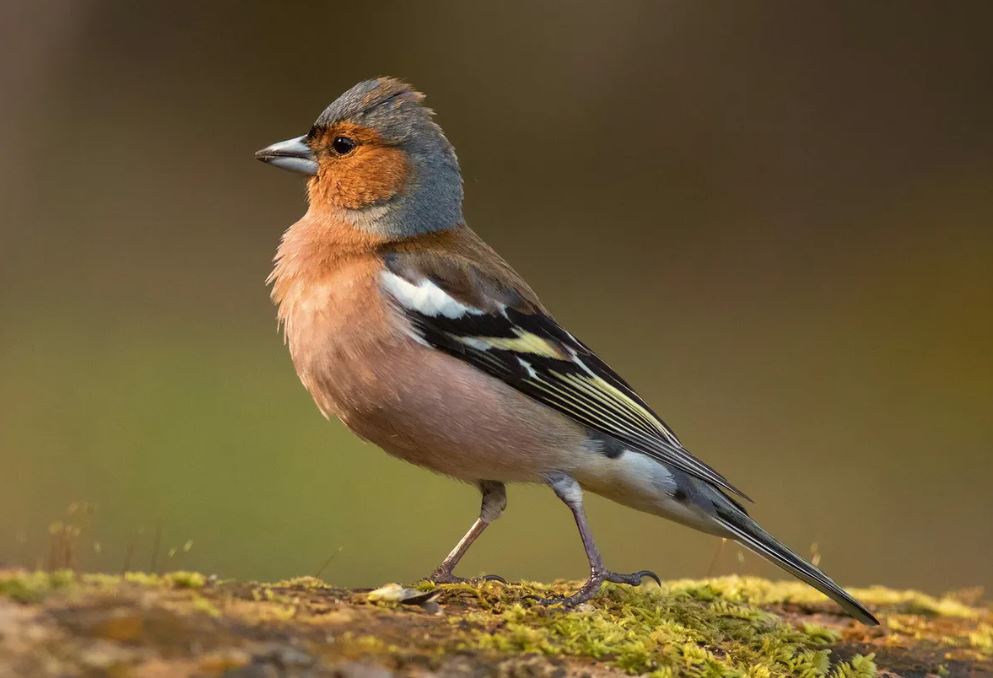
- Scientific Name: Fringilla coelebs
- Estimated population at peak season: 5,050,000
- Conservation Status in the UK: Green
Like many bird species, male chaffinches exhibit more vibrant plumage compared to females. Males boast a deep red chest, gray head, and brown/black wings, while females have a pinkish-brown chest, brown head, and back. Both sexes display white patches on their wings.
Equipped with a strong, cone-shaped bill, chaffinches, like most finches, primarily feed on seeds. They can be found throughout the UK year-round, making frequent appearances in gardens, woodlands, and various habitats.
7. Blue Tit
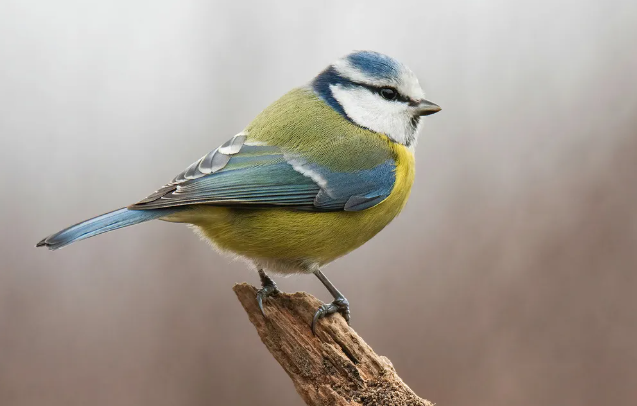
- Scientific Name: Cyanistes caeruleus
- Estimated population at peak season: 3,400,000
- Conservation Status in the UK: Green
Distinguished by its blue, yellow, and white plumage, the blue tit is easily recognizable. Pay attention to its black, bandit-style eye mask and blue cap, which set it apart from its larger counterpart, the great tit.
The blue tit holds the title of the most common tit in the UK. It is a regular visitor to bird tables in British gardens and can also be found in woodlands. During winter, blue tits often form mixed flocks with other tit species and other small birds.
8. Dunnock
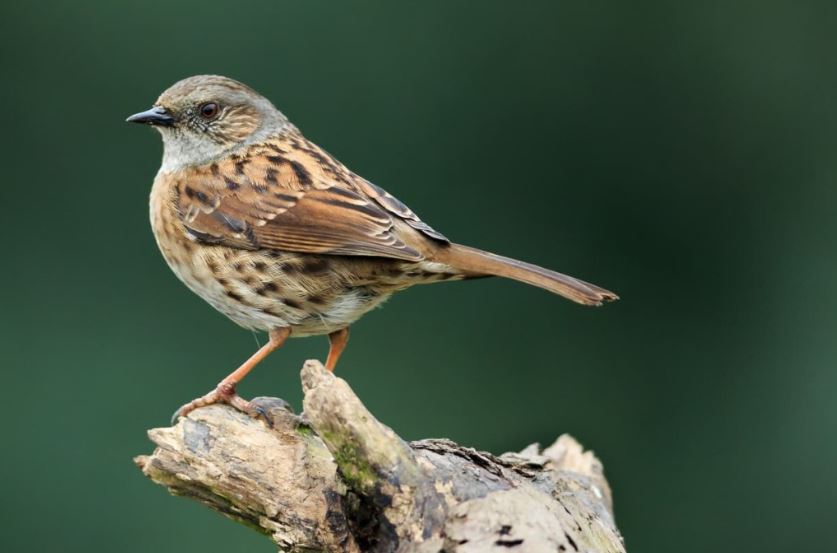
- Scientific Name: Prunella modularis
- Estimated population at peak season: 2,500,000
- Conservation Status in the UK: Amber
Despite its nickname “hedge sparrow,” the dunnock belongs to the Prunellidae family, rather than the Passeridae family to which house sparrows and other “true” sparrows belong.
Similar in size and color to a house sparrow, the dunnock can be recognized by its slender bill, gray chest, and gray head. Unlike house sparrows, dunnocks are not commonly seen in large groups.
9. Meadow Pipit

- Scientific Name: Anthus pratensis
- Estimated population at peak season: 2,450,000
- Conservation Status in the UK: Amber
The meadow pipit, unlike many other common British birds, is not frequently observed in gardens. It is predominantly found in grasslands, heaths, and moors. Resembling a sparrow in size, it possesses a slender bill, streaked chest, and brown wings. Meadow pipits are often seen on the ground or perched on posts and fences.
10. Great Tit
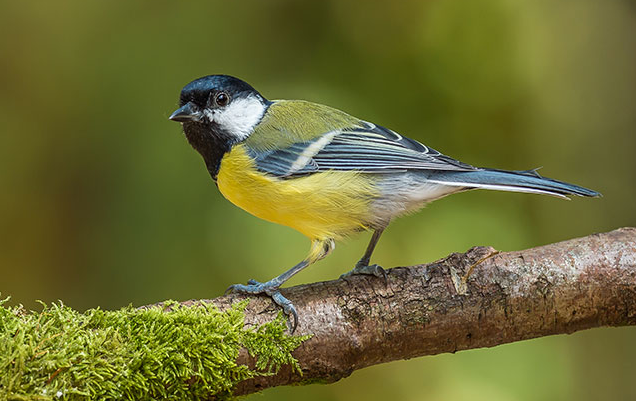
- Scientific Name: Parus major
- Estimated population at peak season: 2,350,000
- Conservation Status in the UK: Green
Distinguished by its black head, white cheeks, yellow chest divided by a black line (thicker in males), and green-grey wings, the great tit is noticeably larger than the blue tit.
The great tit is a common woodland bird and frequently visits British gardens. It is usually seen in pairs but forms larger flocks with other tits during the winter.
11. Pheasant
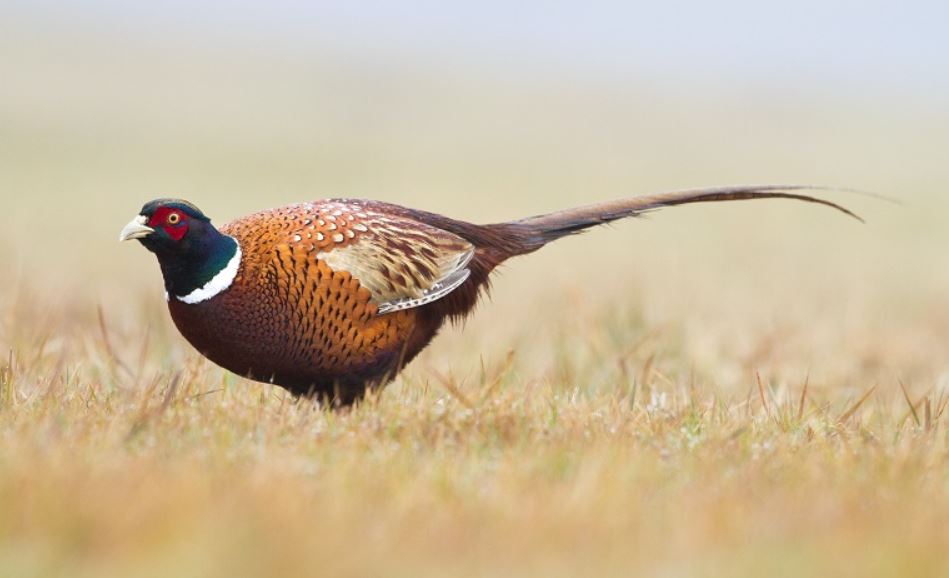
- Scientific Name: Phasianus colchicus
- Estimated population at peak season: 2,350,000
- Conservation Status in the UK: Introduced
While three pheasant species can be found in the UK, the common pheasant is the most prevalent and recognizable. These large, long-tailed birds prefer walking over flying. The golden pheasant and Lady Amherst’s pheasant, the other two species found in the UK, are extremely rare and localized.
All three pheasants are non-native, originating from Asia and introduced to the UK.
12. Willow Warbler

- Scientific Name: Phylloscopus trochilus
- Estimated population at peak season: 2,300,000
- Conservation Status in the UK: Amber
During the summer, over two million willow warblers grace the UK before migrating to tropical Africa for the winter.
The willow warbler is a small bird with pale olive-green-brown plumage and a faint pale eye stripe. It belongs to the Phylloscopus genus, a group known as “leaf warblers.” Differentiating between leaf warbler species can be challenging, but their songs often serve as the best distinguishing feature.
British birders face difficulty distinguishing the willow warbler from the chiffchaff, as their appearances are similar. However, the willow warbler’s song consists of a soft, descending melody, while the chiffchaff’s repetitive call resembles its name, “chiff-chaff.”
13. Black-headed Gull
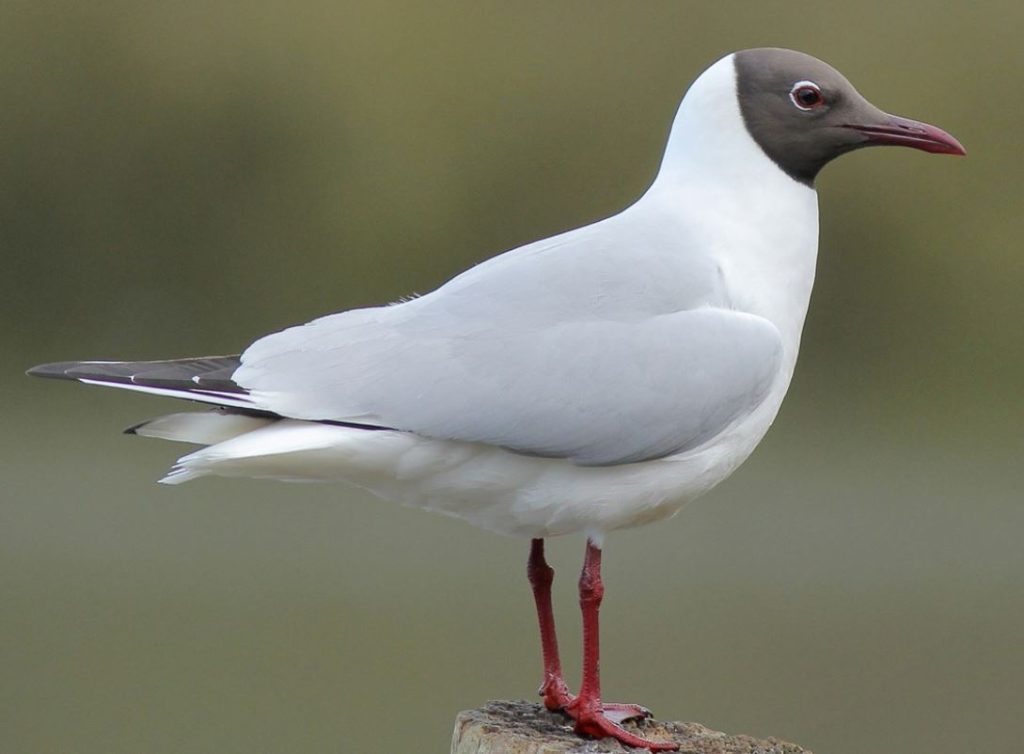
- Scientific Name: Chroicocephalus ridibundus
- Estimated population at peak season: 2,200,000
- Conservation Status in the UK: Amber
The black-headed gull is smaller than the herring gull and easily recognizable during the summer due to its black head. In winter, the head turns white with small black patches above and behind the eyes, reminiscent of its summer appearance.
While two other small gulls also possess black heads during summer, the Bonaparte’s gull is rare in Britain, and the Mediterranean gull lacks the black markings on its wings that the black-headed gull exhibits. Therefore, if you encounter a gull with a black head in summer, it is most likely a black-headed gull.
14. Chiffchaff
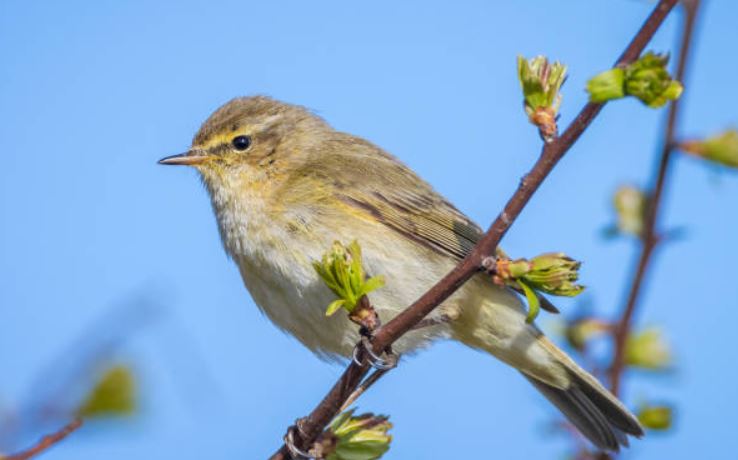
- Scientific Name: Phylloscopus collybita
- Estimated population at peak season: 1,750,000
- Conservation Status in the UK: Green
Similar to the willow warbler, the chiffchaff belongs to the leaf warbler genus, Phylloscopus. Fortunately, the chiffchaff possesses a distinctive song—a rhythmic “chiff-chaff” after which it was named—making it easily recognizable. This song is a delightful sign that spring has arrived.
During spring and summer, chiffchaffs can be seen flitting among trees and bushes, occasionally hovering as they capture passing insects.
15. Starling
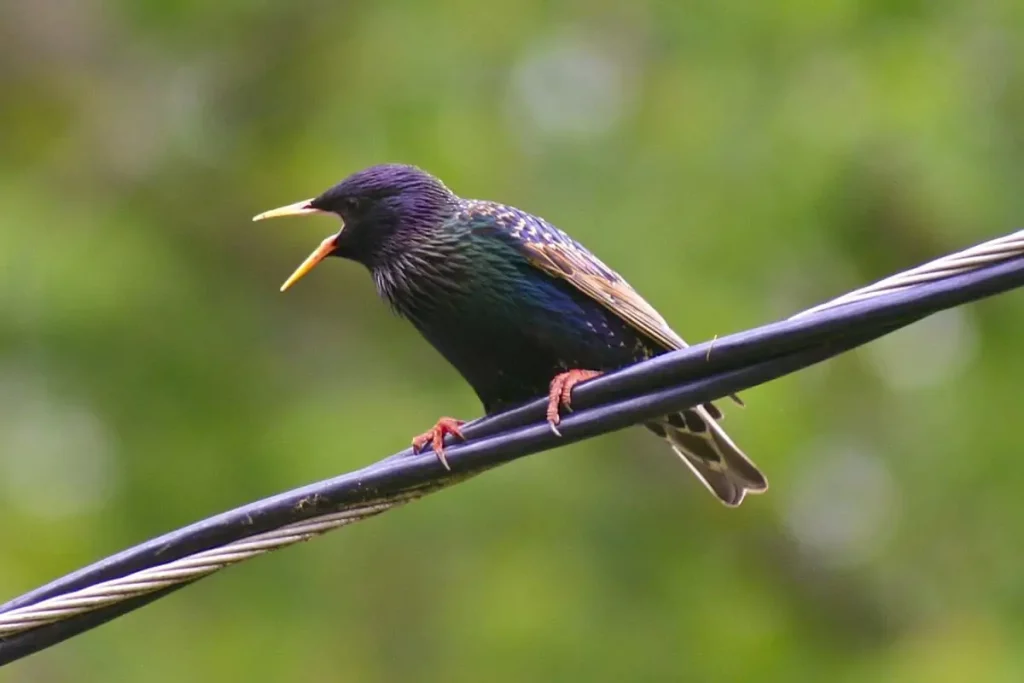
- Scientific Name: Sturnus vulgaris
- Estimated population at peak season: 1,750,000
- Conservation Status in the UK: Red
The starling, a medium-sized black bird often seen in flocks, inhabits farmland, towns, and villages. Its plumage, unlike the blackbird’s, features many white spots and exhibits an iridescent green and purple sheen when caught in the right light. During the breeding season, the starling’s bill turns yellow, while it appears dark during other times of the year. The legs of starlings are red-brown.
During winter, starlings congregate in large numbers and create mesmerizing murmurations, which are swirling, synchronized flight displays that constitute one of Britain’s most captivating natural phenomena.
Despite its commonality, the starling has been assigned a Red conservation status in the UK due to significant population declines in recent years.
16. Blackcap
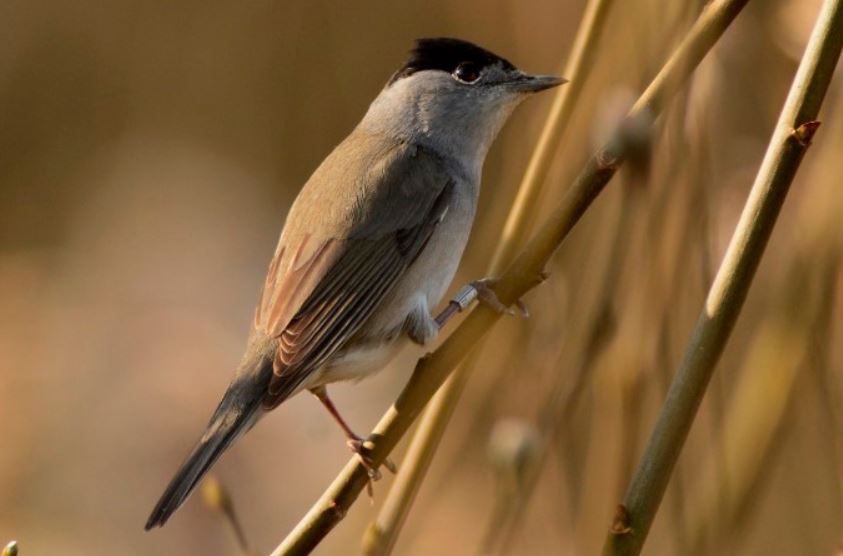
- Scientific Name: Sylvia atricapilla
- Estimated population at peak season: 1,650,000
- Conservation Status in the UK: Green
The blackcap, easily distinguished by its distinctive “cap,” black in males and chestnut brown in females, boasts a pale grey chest, dark grey wings, and back.
While blackcaps may occasionally visit rural gardens, they are more commonly found in farmland and woodlands. Known as the “Northern Nightingale” for its melodious fluting song, the blackcap emits a harsh click as its call.
The UK hosts a year-round blackcap population, which is augmented by European visitors during spring and summer.
17. Goldfinch
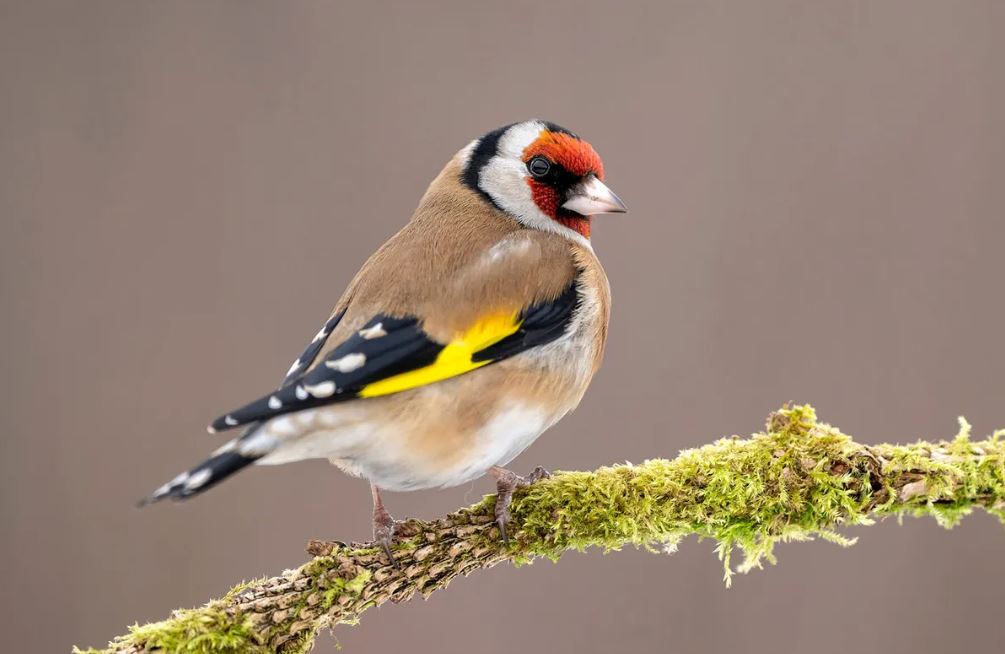
- Scientific Name: Carduelis carduelis
- Estimated population at peak season: 1,650,000
- Conservation Status in the UK: Green
With its vibrant red face and golden wing bars, the goldfinch stands out as one of the most visually striking birds in Britain. Resident populations are joined by summer migrants from Europe, and toward the end of the breeding season, goldfinches often form small flocks.
Woodlands, scrublands, and gardens are the favored habitats of goldfinches.
18. Jackdaw
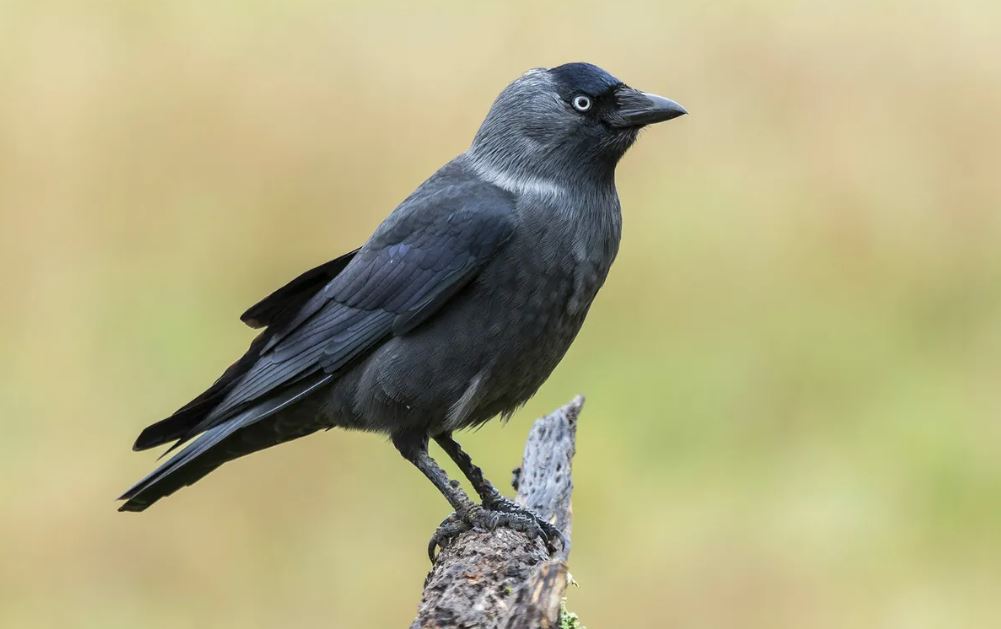
- Scientific Name: Coloeus monedula
- Estimated population at peak season: 1,550,000
- Conservation Status in the UK: Green
As the most common member of the crow family, Corvidae, found in Britain, the jackdaw displays dark slate-grey plumage with lighter gray around the head. It can be recognized by its monosyllabic “Jack” call, which some believe inspired its name.
Jackdaws often choose chimneys as nesting spots. They mate for life and are often seen in pairs during spring and summer, joining larger flocks during autumn.
19. Skylark
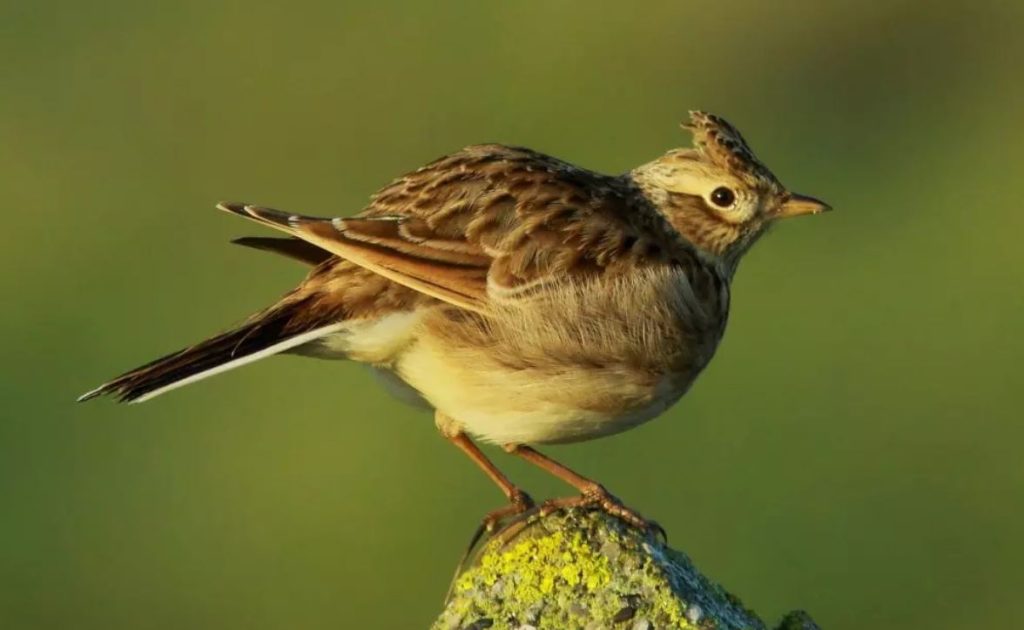
- Scientific Name: Alauda arvensis
- Estimated population at peak season: 1,550,000
- Conservation Status in the UK: Red
The mellifluous warbling of a male skylark is one of the beloved sounds of the British summer. During its characteristic song flight, the skylark hovers in one spot, 50 to 100 meters in the air, often appearing as a small dot against the sky.
Skylarks possess streaked chests, white undersides, and patterned brown wings and back.
20. Woodcock

- Scientific Name: Scolopax rusticola
- Estimated population at peak season: 1,400,000
- Conservation Status in the UK: Red
The woodcock, despite being one of the most common British birds, is rarely sighted due to its nocturnal behavior and excellent camouflage during the day. The best opportunity to see a woodcock is at dusk during the summer when males engage in fast display flights over woodlands, a behavior known as “roding.”
Although a wading bird, the woodcock is typically found in woodlands or fields near woodlands. While a breeding population remains in the UK throughout the year, the country’s population significantly increases during winter as visitors from Northern Europe join their ranks.
Most Common British Birds List: Additional Notes
The population estimates provided represent the size of each species’ population at its peak season. For example, for species with substantial summer migrants like the chiffchaff, the estimate reflects the summer population. In contrast, for species with larger winter populations like the black-headed gull, the estimate corresponds to the winter population.
The data used to compile this list is sourced from the BTO’s “Population estimates of birds in Great Britain and the United Kingdom” paper. (Source)